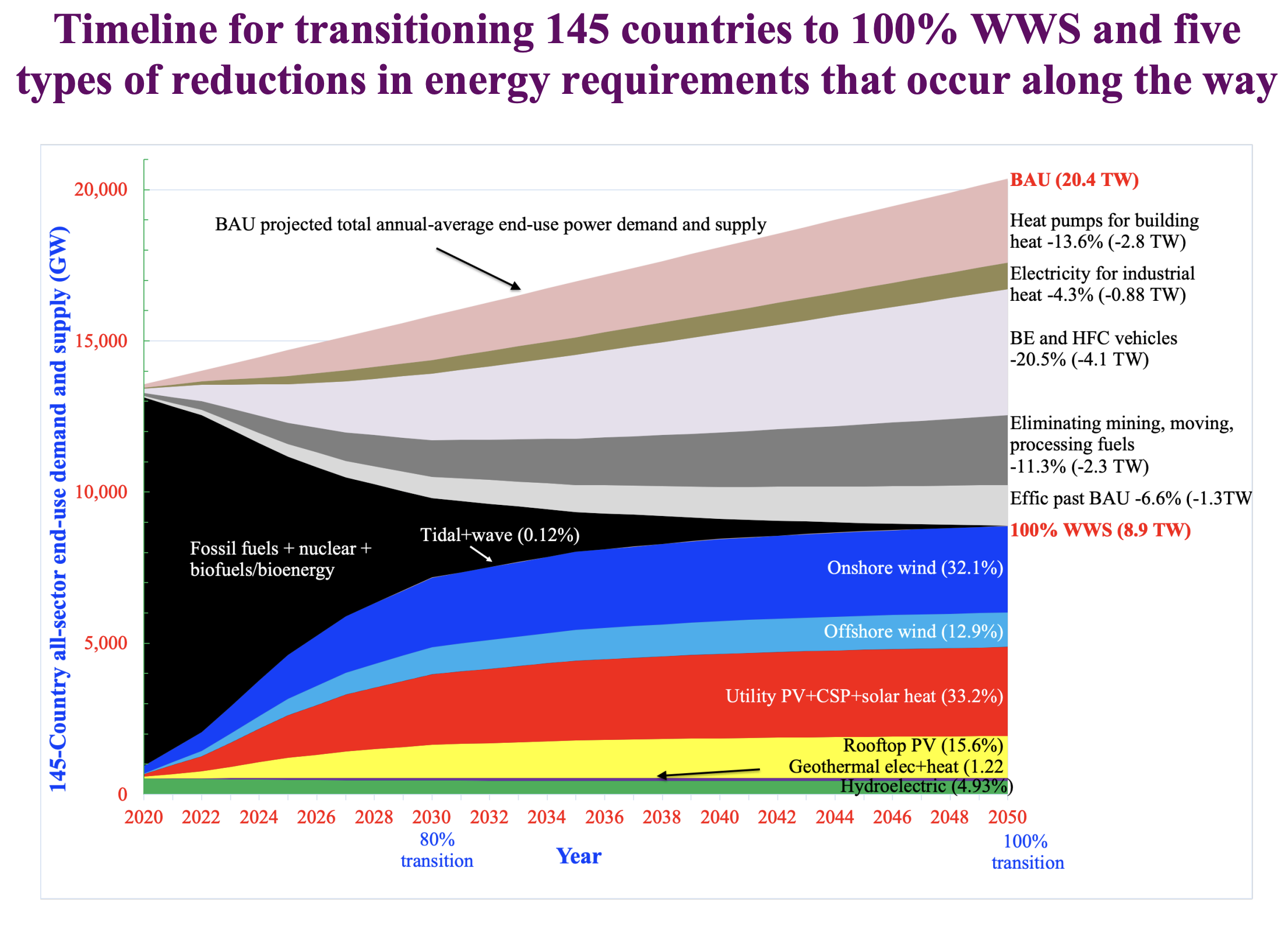Stanford study shows benefits of rapid transition to 100% renewable energy
In the past few years fossil-fuel dependence has caused major fuel price increases, energy blackmail, issues with grid stability, and the continued loss of over 7 million lives a year to air pollution and climate-related disasters. A new study from Stanford University found that rapidly transitioning our global energy systems to 100% renewable energy could solve all of these problems without fear of blackouts and at a lower cost than today’s energy system.
The study focused on 145 countries that currently make up 99.7% of global emissions. Relying almost entirely on commercially available technology, the Stanford team laid out a path to decarbonize the energy system by as early as 2035 (and no later than 2050), with an 80% transition by 2030. Following this plan, they estimated an additional 340 billion tonnes of CO2 would be added to the atmosphere by 2050. This is well below the 500 Gt budget outlined by the Paris Agreement to keep warming below 1.5˚C, demonstrating that it is possible to meet our climate goals without relying on unproven “silver bullet” technologies.
To validate their plan, the team used three models:
- A model to simulate global weather to predict wind and solar intensities in each country
- A second to model energy supply and demand over time
- And a third to match supply and storage with variations in demand
To meet energy demand, they utilize a familiar suite of renewables: onshore and offshore wind, solar photovoltaics, solar heat, geothermal, hydroelectricity, and a small amount of tidal and wave electricity.

They found that by switching to heat pumps, electric vehicles, and electricity for industrial heat, a fully renewable grid comes with steep efficiency gains, reducing the total projected energy demand in 2050 by 56%. With renewables, people often worry about inconsistency, but the study showed that by expanding transmission, using district heating, shifting the timing of some electricity use, the model showed batteries with no more than 4-hours of storage capacity could meet the energy demands in all cases. All in all, this plan could be achieved using less than one-half of a percent of the world’s land. Most of this area would be empty space between wind turbines, which could be used for agriculture or more solar panels.
The overall upfront cost of implementation for all 145 countries was estimated at $62 trillion. However, due to cheaper per unit energy costs and the social costs of fossil energy, transitioning to 100% RE could save trillions in net savings. Currently, fossil fuels contribute to millions of deaths a year and exacerbate climate disasters; moving to renewables on this timeline would reduce these costs by 92%. All in all, investment in RE would pay for itself. The study also estimated that 28 million long-term, full-time jobs would be created in the process.
The Stanford model relies on 100% all-electric renewables without the use of solar or geothermal heat, bioenergy, or other non-electrical carriers, though it does include some green hydrogen produced by renewable power. This model offers one specific approach to meeting the world’s energy needs with renewable sources. Other models, including the One Earth Climate Model, also exclude fossil fuels and nuclear but make room for bioenergy and heating from solar and geothermal sources. In all scenarios, it’s clear that making a rapid transition to 100% renewable energy for all purposes will reduce energy costs, save lives, create jobs, and pay for itself many times over by reducing the social cost of fossil fuel energy by over 90 percent.
%202.jpeg?auto=compress%2Cformat&w=1440)

